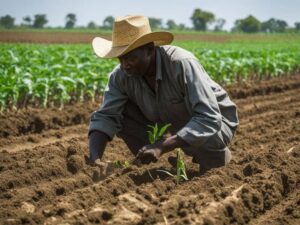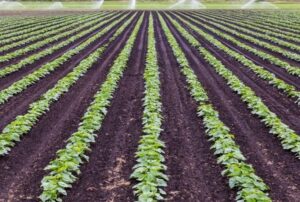5 Key Facts About Rabi Ki Fasal and Kharif Fasal Kise Kahate Hain
Rabi ki fasal plays a crucial role in the agricultural calendar of India, contributing significantly to the country’s food security and economy. In India, agriculture follows a season-based approach, where crops are categorized based on the time of their sowing and harvesting. The two main cropping seasons in India are Rabi and Kharif. Understanding these seasons, along with the crops associated with them, is essential for farmers and agriculture enthusiasts alike. In this blog, we will explore the key facts about rabi ki fasal and kharif fasal, while also addressing the common question, “Kharif fasal kise kahate hain?” and “Ravi ki fasal kise kahate hain?”
This comprehensive guide will provide valuable insights into the nature of these seasons, their crops, and practical information about their cultivation. By the end, you will have a solid understanding of the distinction between Rabi and Kharif crops, their impact on farming, and how they contribute to sustainable agriculture.
What is Rabi Ki Fasal?
Rabi ki fasal refers to the crops grown during the winter season, typically sown in October to December and harvested between March and April. These crops rely on the winter rains or irrigation, and the cooler temperatures are ideal for their growth. The most common rabi crops include wheat, barley, oats, mustard, and gram.
Characteristics of Rabi Ki Fasal
- Seasonal Timing: Rabi ki fasal is grown during the cold winter months. The time of sowing varies based on climatic conditions, but generally, the sowing starts in October and goes until December. These crops require a moderate temperature range and cooler weather for growth.
- Water Requirements: Unlike Kharif crops, rabi ki fasal does not depend on monsoon rains for its water supply. It is typically irrigated, and farmers rely on reservoirs, rivers, and tube wells to irrigate these crops during their growing period.
- **Examples of Rabi Ki Fasal: Some of the most important rabi crops include:
- Wheat: India’s largest food crop, widely cultivated in the northern states.
- Barley: Grown mainly in the colder regions like the Himalayan foothills.
- Mustard: Known for its oil seeds, mustard is another major rabi crop.
- Gram (Chickpeas): Popular for its high nutritional value, especially in protein.
- Harvesting Period: As rabi crops are sown in the winter and grow during the cool months, they are harvested before the arrival of the summer heat, typically in March or April.
- Economic Importance: Rabi ki fasal provides essential food grains like wheat and pulses, which are vital for both domestic consumption and export. India’s food security depends significantly on the timely sowing and harvesting of rabi crops.
Examples and Practical Tips for Growing Rabi Crops
To get the most out of rabi ki fasal, farmers must focus on choosing the right crop varieties suited to the climatic conditions of their regions. Here are a few practical tips for successful rabi farming:
- Soil Preparation: Preparing the soil well before sowing is critical. Ploughing the soil ensures that the seedbed is smooth and well-aerated for seed germination.
- Water Management: While rabi crops do not rely on rainfall, irrigation is vital for their successful growth. Ensure the crops are watered regularly, especially during dry spells.
- Crop Rotation: It’s essential to rotate rabi crops with kharif crops to maintain soil fertility and prevent the buildup of pests and diseases.
Related Resources:
To learn more about the cultivation and importance of rabi crops, check out this detailed guide on Rabi Seed Information.
What is Kharif Fasal?
Kharif fasal refers to the crops grown during the monsoon season, typically sown with the onset of the first monsoon rains around June and harvested in the fall, from September to November. These crops thrive in hot and humid conditions and depend heavily on the rainfall during the monsoon.
Characteristics of Kharif Fasal
- Seasonal Timing: Kharif crops are sown at the beginning of the monsoon season and harvested just after it ends. The exact timing may vary across regions, but generally, the sowing takes place between June and July, and the harvesting is done in September to October.
- Water Requirements: Kharif crops are highly dependent on the monsoon rains. The crops require adequate rainfall during the sowing period to grow efficiently, and they thrive in the wet, warm conditions that prevail during the monsoon season.
- **Examples of Kharif Fasal: Popular kharif crops include:
- Rice: One of India’s staple foods, rice requires a lot of water and is mainly grown in regions with high rainfall.
- Cotton: Widely grown in the states of Gujarat, Maharashtra, and Andhra Pradesh, cotton needs a warm climate and adequate rain for growth.
- Maize (corn): Maize grows well in both irrigated and rainfed conditions.
- Soybean: A high-protein legume, soybean is essential for both domestic consumption and export.
- Rice: One of India’s staple foods, rice requires a lot of water and is mainly grown in regions with high rainfall.
- Harvesting Period: Kharif crops are harvested after the monsoon season ends, typically from September to November, depending on the crop type and the region’s climate.
- Economic Importance: Kharif crops are critical for feeding India’s population. Rice, for example, is a staple food for millions of people. The success of the kharif season directly affects food availability, employment, and the agricultural economy.
Examples and Practical Tips for Growing Kharif Crops
Farmers growing kharif crops need to consider various factors to ensure a successful harvest:
- Water Management: Since kharif crops rely on rainfall, farmers must monitor the monsoon patterns carefully. Ensure proper drainage systems to prevent waterlogging, which can damage crops.
- Fertilization: Adequate fertilization is essential for optimal crop growth. Use organic fertilizers for sustainable farming practices.
- Disease Management: Kharif crops are susceptible to diseases due to the humid monsoon conditions. Regularly inspect crops for pests and fungal infections, and use organic pest control methods to manage them.
Related Resources:
For insights on water-efficient farming, consider exploring Best Practices for Water Erosion.
Key Differences Between Rabi Ki Fasal and Kharif Fasal:
Understanding the difference between rabi ki fasal and kharif fasal is essential for maximizing yields and ensuring optimal crop selection based on the weather patterns and the availability of water resources. Here are the key differences:
1. Season and Climate
- Rabi Crops are grown in the winter season with cooler temperatures and are usually dependent on irrigation.
- Kharif Crops are grown in the monsoon season, relying heavily on rainfall and warm weather conditions for growth.
2. Water Dependency
- Rabi crops require irrigation since they grow during the dry winter months.
- Kharif crops, on the other hand, depend on monsoon rains for water.
3. Common Crops
- Rabi Crops: Wheat, barley, mustard, gram, and pulses.
- Kharif Crops: Rice, cotton, maize, and soybeans.
4. Time of Sowing and Harvesting
- Rabi crops are sown from October to December and harvested in March to April.
- Kharif crops are sown during June-July and harvested in September-November.
5. Economic Impact
- Rabi crops are mainly food grains and pulses, important for domestic consumption.
- Kharif crops are essential for both food and cash crops like rice, cotton, and soybeans.
Conclusion: The Importance of Rabi Ki Fasal and Kharif Fasal in India’s Agriculture
In conclusion, both rabi ki fasal and kharif fasal play significant roles in India’s agriculture, feeding millions and supporting the economy. While rabi crops are vital for food security during the cooler months, kharif crops are essential for the monsoon-dependent agricultural cycle. By understanding the distinctive features of these crops, farmers can make informed decisions about crop selection, irrigation, and pest management to optimize yields and contribute to sustainable farming practices.
For more information on organic farming techniques and crop cultivation, you can explore various related resources on organic farming, crop protection, and sustainable agriculture practices. Consider reading this guide on Organic Farming and this article on Wheat Cultivation for deeper insights into organic farming.
By adopting the right farming practices for rabi ki fasal and kharif fasal, you can contribute to a more sustainable and prosperous future for Indian agriculture.














Post Comment